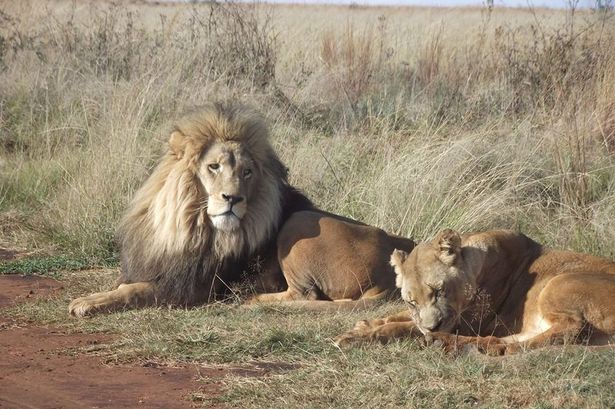‘This is my second chance to live,’ Augustine Charahani thought when he was finally rescued from the capsized ferry in Ukara, Tanzania.
he water kept rising. The air pocket around his head kept shrinking. And nearly two days after his ferry capsized, no one seemed to realise that someone was still alive, trapped in the pitch black of the engine room. So Augustine Charahani, the engineer, simply waited, helplessly, clinging to a staircase in the capsized vessel, caught between hope and hopelessness.
“I am going to die, but maybe I will be rescued,” he remembers telling himself during the more than 40 torturous hours he survived inside the overturned hull. He was alone down there. When the ferry capsized last September, it was nearing its destination: the small island of Ukara in Tanzania. The ferry – the main link between remote islands in Lake Victoria – was overcrowded, with more than 265 passengers and crew members on board. Many were returning from shopping trips to a larger island about an hour away.
In the initial moments after the ferry flipped, about 40 people were able to swim ashore or stay afloat long enough to be picked up by fishermen and other rescuers, Tanzanian officials said. In all, 228 people drowned, including many caught inside the main passenger cabin.
But long after everyone else had drowned or made it ashore, Charahani managed to stay alive trapped beneath the ferry, often in complete darkness, for two nights and three days. “I knew it was my turn to die, but I remained hopeful that someone out there was coming,” he remembers thinking.
It is still unclear why the ferry, the Nyerere, flipped as it neared the island. Some survivors say the sudden rush of people toward the front, as they jockeyed for position to disembark, caused the boat to tip. Other survivors quoted in local news articles have said the captain made a sharp turn after realising he was approaching the dock from the wrong side.
When the ferry overturned, Charahani was in the engine room, filling out paperwork about a journey that should have been minutes from ending. He was knocked to the ground. It took him a moment to get his bearings. The engines, he realised, were upside down. He heard an inrush of water. And he heard passengers wailing.
“Mother, we are dying,” people called out.
The engine room is tall, with a meter or two of clearance above his head. Steep stairs run along one wall. There are a couple of windows and panelling on the door that let light through. The room had flipped over, no longer so familiar. He put on a life jacket. He could no longer hear any voices. The silence came on so quickly that it confused him. “Their screams were so loud,” Charahani remembers. “I think they struggled and drowned almost immediately.”
Water began trickling into the engine room.
It was dark. At some point, Charahani says, he fell asleep and dreamed of Jesus. He awoke thinking he would live through this ordeal, knowing there must be divers looking for survivors. He guessed that the room was half-submerged. “Help me,” he remembers screaming, banging on the wall with his fists.”
At first, Charahani assumed there were other survivors who had found air pockets like he did. But as the silence deepened and his shouts went unanswered, he began to think he was the only one. “I alone am stuck down here still alive,” he thought. Using his keys, he began rapping on the wall, three knocks at a time. Once – he believes it was during the second day – he heard someone knocking back. He was elated.
But no one came for him. Charahani slept some more, curling up on the steep stairs, his head resting on a second life jacket. “Anytime I sleep, there is a good chance of me sliding and falling back into the water,” he remembers thinking.
As the hours passed, Charahani could see faintly at times, the light seeming to come through the panel on the door. The engine room’s windows were underwater. He tried to guess how submerged he was, unable to tell whether the boat was still floating on the surface, or had sunk far beneath it.
He began to feel faint with hunger. His thoughts turned away from drowning, toward starvation and heat exhaustion. The room was growing warmer and warmer. With his cupped hands he began to pour water over his head. But there was so much oil that soon he was covered in it. He banged on the walls, three strikes in quick succession.
A father of four, Charahani thought of his family, wondering what he could have done to make things better for them. How would his family survive after he died, he asked himself. He thought of all the time he had spent on the ferry, leaving every morning and returning later in the day.
The ferry was vital in the lives of the islanders, and people were always happy to see it. On land, everything was stop and go. But on the water, Charahani felt free. The way you could move purposefully, unimpeded.
He had loved his job. What a fool he had been, he thought. Why had he chosen a dangerous job on the water, he wondered. He had never thought of his work as particularly dangerous before. But here he was, trapped.
The water crept higher, and he moved higher up the stairs. But he was running out of room above him. “Soon, there would be no air and the engine room would be filled all the way up with water,” Charahani remembers thinking.
The room was perhaps three-quarters full of water, he guessed. He wondered if he would have the strength to find and break one of the windows. His heart began to race as he imagined the final moments, when he would have to leave his ladder and try to get to the surface. He poured more water on himself trying to keep cool. Oil coated his face.
On Saturday morning, about 42 or 43 hours after the ferry overturned, he felt a hand grasp his ankle. It was a scuba diver, part of a team recovering bodies. Charahani gave his leg a shake, he said, so the diver would know that he was alive.
The diver greeted him. “Salaam alaikum.” Or peace be upon you.
“Are you OK?” the diver wanted to know. Charahani nodded. The diver looked around for other survivors in the engine room. “I’m alone,” the engineer said.
The diver disappeared, returning sometime later with others on his team. The divers conferred among themselves, planning the route out. Charahani felt himself growing irritable and impatient. “Why is it taking that long?” he wondered.
The engineer was given a mask and oxygen. He was told to close his eyes and breathe. The sunlight overwhelmed him as he reached the surface, some time, he believes, before 10am on 22 September. Ukara Island, the ferry’s destination, was there right in front of him. On shore, he was loaded into an ambulance, which rushed toward the nearest health clinic, sirens blaring.
The ambulance came to a stop. A scrum of soldiers and medical workers lifted him up and carried him feet first toward the clinic. He was taken past coffins that lay on the dusty ground, through throngs of relatives still waiting for the bodies of their drowned loved ones.
“This is my second chance to live,” he thought.

.jpeg&w=60&q=100&h=60)





.jpeg&w=60&q=100&h=60)




